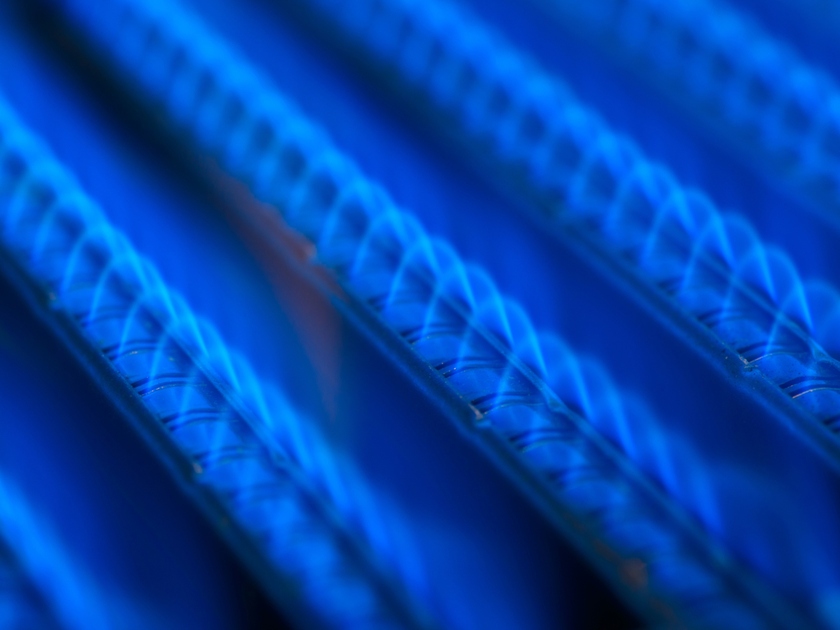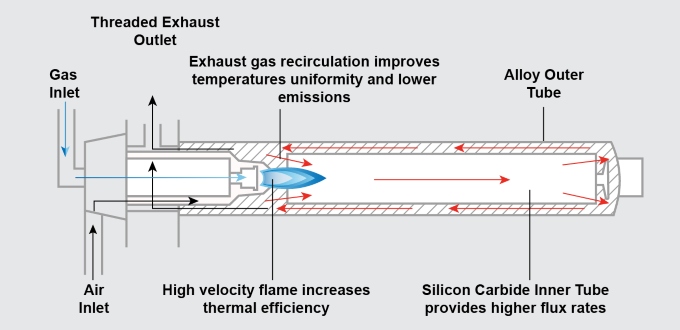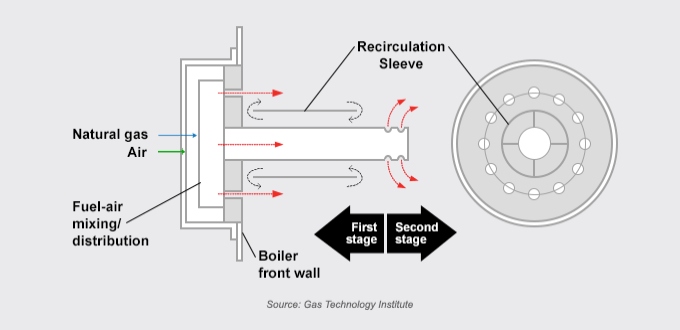Burners are designed to maximize combustion efficiency while minimizing the release of emissions. A boiler will run only as well as the burner performs. An efficient burner provides the proper air-to-fuel mixture throughout the full range of firing rates. These strategies will help optimize combustion while reducing nitrogen oxide (NOx) emissions.
1. Low excess air firing
Low excess air firing reduces NOx formation by decreasing the amount of free oxygen and nitrogen available. Low excess air, however, may prevent complete combustion and tends to increase carbon monoxide and volatile organic compound emissions.
Technologies that result in low excess air include nozzle-mix and high-swirl burners. Nozzle-mix burners pipe the air and gas separately to the burner assembly to mix the two at the burner head itself. Swirl burners use a firing head to produce high-velocity rotation of the combustion air for improved mixing and flame stability. Swirl burners are available with turndown rates as high as 12:1.
2. Staged combustion air
Staged combustion mixes air and fuel at two or more locations in the boiler to create zones of high and low excess air, resulting in significant NOx emissions reductions. The first zone operates at higher oxygen concentrations, while the second zone operates at lower oxygen concentrations. Complete combustion occurs much farther from the initial combustion zone.
Staged combustion is achieved by installing air-only ports, referred to as overfire air (OFA) ports, above the burner zone. A portion of the air is redirected from the burners to the OFA ports. Lance air is a variation of this concept in which air tubes installed around the periphery of each burner supply staged air. Another method is to terminate the fuel flow to selected burners while leaving the air registers open.
Flame length and burner header pressure can be impacted. Although operating costs are low, higher airflow is required to control carbon monoxide.
3. Flue gas recirculation
In flue gas recirculation (FGR), fans recirculate cooler exhaust air back into the combustion process to lower the flame temperature and reduce NOx formation. The recirculated flue gas is usually about 10% to 15% of burner combustion gases. FGR has moderately high capital and operating costs. It can impact furnace pressure, lower burner pressure and flame stability.
FGR often causes stack temperature to rise, reducing efficiency. The cost associated with these stack losses is small compared to the cost of added fan horsepower required for FGR. In most cases, fan horsepower cost is two to five times more.
4. Water or steam injection
Injecting water or steam at the burner or into the combustion air lowers flame temperatures and reduces NOx formation. The amount of water injected normally varies between 25% to 75% of the natural gas feed rate. Less water than steam is needed to achieve the same quenching effect because the high heat of vaporization required to change water into steam lowers the flame temperature faster.
Steam injection has higher operating costs than FGR. The higher cost results from the increase in natural gas required to produce the extra steam. For water injection, there is an efficiency penalty resulting from the absorption of energy to evaporate the water. Other potential disadvantages of this method include flame instability and increased carbon monoxide emissions.
5. Forced internal recirculation
Forced internal recirculation (FIR) combines premixed combustion, internal recirculation of partial combustion products and controlled air staging. This combination promotes stable, uniform combustion, minimizes peak flame temperatures, prevents the formation of high-oxygen pockets and enhances heat transfer to reduce second-stage combustion temperatures. NOx formation is reduced while good fuel burnout characteristics are maintained.
FIR is more energy efficient than competing burners that use high levels of FGR, low excess air or water/steam injection. The energy penalties of competing methods include higher stack losses and fan power requirements.



